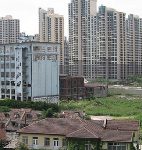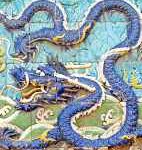[An earlier version of this article was published on July 28, 2008]
This week China reaches a historic milestone: the thirtieth anniversary of Deng Xiaoping’s economic reforms. And there is much to celebrate. Three decades ago China was isolated and struggling, with poverty rates on a par with Malawi. Today China has joined the “premier league”: China’s economy has grown nine-fold to become the fourth-largest economy in the world (a reasonable appreciation of the yuan would propel China in to second place, ahead of Japan). A staggering 200 million people have been lifted out of poverty in this time. China now holds US$1.75 trillion in its coffers, and has become the number one trading nation and destination of foreign direct investment.
Understandably, this achievement has been an inspiration to many around the world. Development experts and ideologues of all shades are touting the “China development model” as incontrovertible evidence in support of their disparate theories of development. And developing country leaders are turning to China in search of solutions to their own developmental quagmires.
From Venezuela to Vietnam, evidence of the appeal of the so-called “China model” abounds. Iran, Syria and other Middle Eastern countries invited China experts to lecture senior officials and academics. And former premier Zhu Rongji famously sent one of his chief aides to Cuba to lecture hundreds of Cuban leaders on social and economic reform, following a visit by Raúl Castro.
Obviously China has done something right. There is little doubt, for example, that the focus on export-oriented growth and gradual liberalisation of prices, combined with an outward-looking foreign investment regime were instrumental to high and sustained economic growth. A high savings rate, upfront investments in large-scale infrastructure development, rapid urbanisation and a good investment climate were also undoubtedly key elements of economic success.
But whether the sum of strategic policy decisions and non-decisions over the past three decades add up to a full-fledged model of development is questionable. The term “China model” implies at least three things: success, replicability and deliberate design. On all three counts there is room still for healthy debate.
Qualified success
China’s achievements should be seen in perspective. Its economic performance over the past 30 years has actually been less impressive than that of its east Asian neighbours (such as Japan and South Korea) during comparable stages of growth. This is not surprising given the similarity of starting conditions and policies (for example, high initial levels of education, land reform, export-orientation, selective state support for key industrial sectors, high savings, disciplined and abundant workforces).
More importantly China’s ecological crisis, mounting social disparities and endemic corruption are critical counterpoints to its economic success. In all these areas the situation has worsened in tandem with economic reform, causing widespread discontent and threatening to jeopardise future growth. China remains very much a developing country. Per capita income is less than in Botswana or Angola, and two thirds of its population have no health insurance. China will face formidable challenges in the future: how it addresses these will be the real test of its success.
Uniqueness
It is questionable how much of China’s experience could or should be exported. “Economic freedom plus political repression” is an all-too-common short-hand description of the “China model”. The suggestion that this may constitute a blueprint for authoritarian regimes is misleading and dangerous. Relative cultural homogeneity and a value-system geared towards perpetuating order and upholding social harmony above promoting individual interests provided the underpinning for a social contract which gives primacy to economic over political freedoms.
Furthermore, China’s uniqueness in terms of size and history help explain its economic rise. China has enjoyed economic superpower status several times in the past. As recently as 1820 it accounted for 30% of global GDP. On a long enough time scale therefore, what we see is reversion to an earlier trend: China may merely be reclaiming its rightful place in the superpower league. China’s size also is a lure in itself: the massive latent pool of cheap labour and the promise of a market of one-billion-plus consumers make China an inherently attractive destination for international capital.
Learning by doing
Most importantly, the concept of a “China model” makes no room for what is arguably the most important ingredient in China’s economic success: serendipity. Rather than treading a pre-set path towards economic development, China was able to improvise along the way, learning from experimentation, and thereby responded flexibly and pragmatically to unintended outcomes and unforeseen events, in line with Deng’s encomium to “cross the river by feeling for stones.”
All major policy changes in China have been the result of a process of trial and error on a limited scale (usually a single sub-national jurisdiction). Successful experiments are then scaled up and rolled out across the country. Thus the establishment and success of four special economic zones in the 1980s was a crucial precursor to the raft of market-oriented reforms that followed. Likewise the bankruptcy law was first piloted in one province before being passed at the national level. The phased decontrol of prices through a dual pricing system – whereby some prices were set by the plan and others progressively set by the market – is another striking example of successful pragmatism.
Change was also instigated from the bottom-up. Almost all the developments in rural China have emerged as a result of local level innovation. When Fenyang county, in Anhui province, broke ranks with Party orthodoxy by dissolving the agricultural commune and allowing individual farmers to sell surplus produce on the market, a domino effect was to ensue that swept through the whole country. By 1983, 98% of peasant households were operating under this new “household responsibility system”, from zero just a few years earlier.
Likewise, the explosion in town and village enterprises (TVEs) in the 1980s took everyone by surprise, including Deng (by his own admission). By the 1990s the TVEs had become the backbone of the rural economy, providing employment (58% of all rural jobs in 1993), financing for local public goods, and also spurring the development of the rural credit system.
Certainly there are many worthwhile lessons to be drawn from China’s experience of economic reform over the past three decades. But China’s approach may be more interesting than its actual policies.
Rather than adherence to an intellectually consistent and ideologically circumscribed model of economic development, reform in China was driven by pragmatism and a piecemeal approach to instigating and managing change. The wisdom of China’s reformers was to stand back and make room for experimentation and local initiative, to embrace and cleverly exploit the inescapable element of luck. If there is one lesson it is to be open and pragmatic about reform.
Leo Horn is national coordinator for the UK-China Sustainable Development Dialogue, and founding director of EnAct 21, a policy advisory consultancy dedicated to promoting sustainable development through diplomacy. He writes here in a personal capacity and his views do not necessarily reflect those of the UK government.
Homepage photo by Catarina Ng



